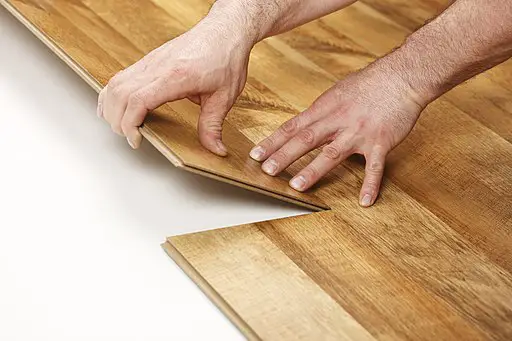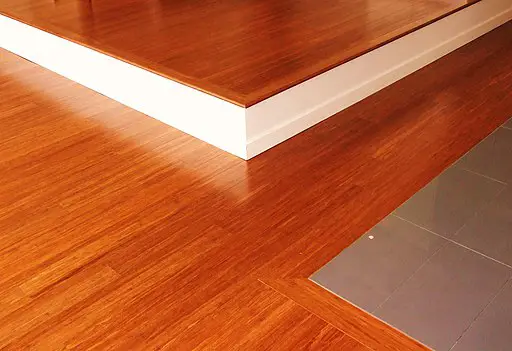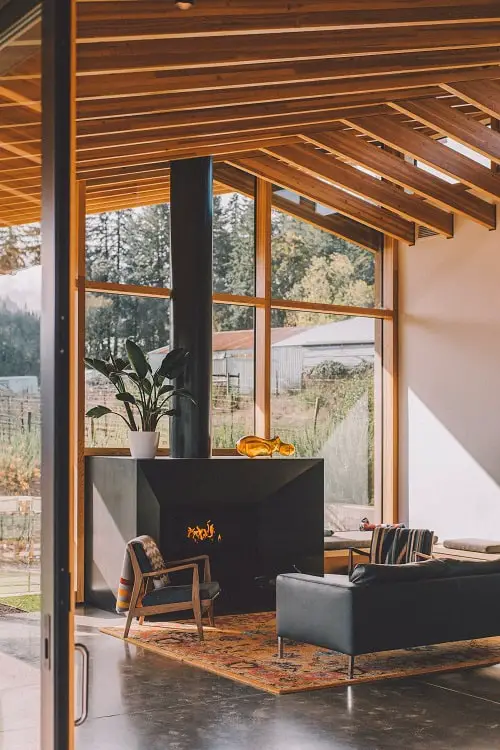
Kitchen flooring is one of the most important investments into a home. It is a permanent investment into your home’s décor and interior. A kitchen is like a center for the entire home and it is a place that requires more protection as compared to the whole house. This is because the kitchen floor has to face multiple water and other liquid spills, heavy amounts of traffic, loads of heavy furniture, and other kitchen equipment.
So, you cannot just randomly pick a flooring option and apply it to your kitchen. It is very important to carefully analyze the different options you have and check the merits and demerits of every option. So that when you make a decision, you make the right decision and choose the best material for your floor in the kitchen.
But before going to that topic, you must know what should be the requirement for kitchen floor materials. These requirements are upon which the merits and demerits of every flooring material should be checked. Below are a few requirements for the kitchen floor option.
THINGS TO CONSIDER FOR KITCHEN FLOORING
When choosing kitchen flooring, there are a number of things to consider such as how water resistant the flooring material is. As also floors can get slippery, how slip resistance is the flooring material. Below we have some key factors you should consider when evaluating flooring material.
- Easy to clean – As the kitchen is one of the most used places in your home, it is very important that whatever the material you choose, it should be easy to clean. There are a lot of materials that look very good in kitchen settings but are very hard to clean and maintain. This creates issues of hygiene and apart from this, if you cannot clean the floor properly, it will change its color, and it might get damaged over time easily.
If your kitchen floor is hard to clean, you will have to put extra effort into cleaning it. But some materials are excellent when it comes to easy maintenance and cleaning. You should only choose these materials and avoid the materials that are harder to clean.
- Heat/fire-resistant – A kitchen is also a place where a lot of heat is produced from the equipment, and if your floor is not heat-resistant or heat-proof. It will absorb all that heat. This heat can mostly deform the kitchen floors, apart from this, it can also damage the floor. The most damaging results of a material’s inability to resist heat will result in the floor getting extremely hot to a point that you cannot even walk without shoes.
Apart from this, heat resistance your floor material should be able to resist the fire. Some materials look like they can easily catch fire, such as hardwood floors, but they do not. This heat and fire resistance ability of the floor helps you better protect your floor. That is why you should choose the materials that are considered good at resisting the spread of heat/fire.
- Water-resistant – The kitchen is an area where water spills and oil spills happen more often than not. That is why you should use materials that are water-proof or water-resistant. There are a lot of flooring options that provide great protection against the water. But some materials absorb water, such as some wooden floors.
But some wood floors have strong water-resistant and do not absorb the water. If you choose a material that is not water-proof, it will absorb water. This will induce water stains on your floor, apart from this, it has the potential to cause severe damages to your floor as well. That is why you choose waterproof materials.
- Slip-resistant – As you already know kitchen floors have to deal with a lot of oil and water spills, which makes the kitchen floor wet and slippery. This can lead to serious slipping and falling, and serious injuries can occur as a result of this. To avoid this, you should choose the hardwood floor types that are not slippery.
Slipper floors do not provide any grip to your feet when you are walking on them. But non-slippery or slip-resistant floors have a special structure that helps you hold your feet on the floor and prevents slipping. This is a reason; you should consider a non-slippery material for your floor.
- Strong and durable – This is also one of the most important features or requirements of a floor that you should look for. A kitchen floor costs a lot of money and a huge chunk of that money goes to the floor material. If it is not strong and durable, it means that it will not last a long time and you will have to replace it again. This increases the cost, and also, if your hardwood floor is not durable, it will not provide enough strength to hold the heavy traffic and furniture.
It will cause dents all over the surface of your floor. This is a situation that would require multiple repairs and thus will result in a further increase in the cost. That is why investing in a non-durable and not-strong enough floor is a very bad idea. You should always invest in a floor that can last longer and has enough strength to hold the required amount of weight and pressure.
- Comfortable and aesthetic – The kitchen floor is once a life-time investment as you cannot change it if you do not like it because it is not comfortable enough or because it does not look beautiful in your kitchen. So, you should choose the material carefully and you should make sure that you choose a material that is comfortable, and beautiful.
Make sure it is comfortable to walk on and also has an aesthetic and beautiful look. You should choose colors of the floor with care and make sure that they match your cabinet setting and color. If your floor is not comfortable and not aesthetic or beautiful looking, then you have wasted your money on that floor. That is why, I always advise that you choose a comfortable, and beautiful looking floor.
- Scratch-resistant – This is one of the most important features to look for on a kitchen floor. You need to make sure that you choose a material that has some sort of scratch-resistant or protection from scratches over its surface. This is because there is a high likelihood of your kitchen floor getting scratched. After all, there are a lot of heavy objects in the kitchen, and pointy things as well.
If your floor is not scratch resistant, it will get more and more scratches over time. When a floor gets scratched, it looks terrible, and it also causes a problem during the cleaning. So, you have to repair these cracks or scratches on the surface and take steps to prevent further scratching as well. To avoid all this hassle, you should choose a hard floor that can resist scratches.
- Match the interior and cabinet – Matching your kitchen cabinet with your flooring option is very important. If your kitchen cabinet and interior of the home is not matching or contrasting the kitchen floor, it would appear very bad and destroy your interior theme. That is why you should choose a material that has similar or contrasting color, and other properties that make it suitable for your floor and also match it to your interior.
Now, you have learned about the basic requirements that every kitchen floor material should have, to be the best or ideal kitchen flooring option. Based on these requirements you can decide what is the best one for you. Below, is the detail of each option of kitchen flooring that you have.
1. Hardwood floor
Hardwood floors are made of using the heartwood or sapwood of the different plants. These wood floors fulfill all the basic requirements of the kitchen flooring. The hardwood for these floors comes from the trees that have high density, strength, and ability to withstand usage of up to 100 years. Which makes them one of the most durable flooring options. The appearance of these hardwood floors is mostly unique, depending upon the species of hardwood you choose and also upon the finishing that you want.
You can get these hardwood floors finished according to your customized needs as well. Some of the hardwood floors are also considered a luxurious option and that is why they add value to your property. So, if you are looking forward to selling your house, it is a great investment to make and maximize your profits.
Below are the options you get if you want a wooden floor in your kitchen.
Solid hardwood floor
Solid wood floors are made only using the trunks of different tree species. These are raw floor planks that are cut and properly shaped and after that finished, either on-site or in the factories. These are considered a very luxurious option in kitchen flooring as they mostly cost a lot of money, but you can also reduce the cost by choosing a cheaper wood type or hardwood species. Below are a few pros and cons of each of these.
Pros of solid hardwood floor
– These are very hard, strong, and durable.
– They have better resistance to pests.
– They can resist water, heat, scratches, and fire.
– Maintenance and cleaning of the solid hardwood floors are easier.
– One of the biggest pros of these hardwood floors is that they are easily available.
– These provide endless options of hardwood species, color, grain, structure, and plank size to choose from.
– These hardwood floors are considered to provide more value for the money and they add value to your property.
– These floors can last for centuries and are considered one of the long-lasting floorings options.
Cons of solid hardwood floor
– Based on the type of hardwood you choose, they can change their color over time as they absorb sunlight.
– Solid hardwood floors are typically more expensive than other types of flooring.
– These floors can get dents, scratches, and require repairing and refinishing over time. For high traffic areas, it is important to put a kitchen mat to better protect
Engineered Hardwood floor
This is also one of the most used types of hardwood floors. In this type, hardwood floor planks are not just raw wooden planks cut from a specific tree trunk. These are made/engineered in the factories. There is a whole process that is used in making these floors better than raw solid hardwood floors. This process makes these floors better scratch-resistant, and also enhances the overall strength of each plank. Below are a few prominent pros and cons of the engineered hardwood floors for the kitchen.
Pros of engineered hardwood floors:
– As they are engineered, they are harder and stronger than regular hardwood flooring
– These floors have more resistance against pests, fire, and water damages.
– These floors are also more protected from scratches.
– These floors make less noise when you are walking on them.
– These are also very durable and long-lasting floors.
– They require less maintenance as compared to the solid floors.
Cons of engineered hardwood floors:
– If they get dent or scratches, it is harder to repair and refinish.
– Just like regular hardwood floors, engineered hardwood floors can also look some of their color over time.
Engineered Cork wood floor
As the name suggests, this is a special type of engineered floor that is made using the bark from the cork tree. This bark is then processed and engineered into a harder sheet or plank of wood. This wood floor is strong enough to be used anywhere in the house. Below are a few major pros and cons of this flooring type.
Pros of Engineered Cork wood floor
– Cork flooring has a strong pest resistance.
– It is also repellent to water and thus protected from water damages.
– It feels soft and warm under the foot.
– It is an environmentally friendly flooring option.
– It can last longer if it is properly taken care of.
– Provides an extended variety of colors, shades, and options to choose from.
Cons of Engineered Cork wood floor
– Can be sensitive to temperature changes.
Bamboo hardwood floor
Bamboo hardwood when engineered becomes very strong and even stronger than many solid hardwood species. This provides extra protection and longer life. Below are a few major pros and cons of these types of hardwood floors.
Pros of bamboo floors
– It is a stronger and durable flooring option for the kitchen.
– It is scratch resistance as well as heat/fire resistance.
– Extra strength and durability make them a long-lasting flooring option.
– Works very well with modern and contemporary decors.
– It is easy to clean and maintain, also costs very little in terms of maintenance costs.
– Overall a very affordable option for kitchen flooring.
Cons of bamboo floors
– Limited options in the color, shade, etc. so, it does not work well with many of the interiors.
Engineered Laminate floor
Laminate flooring is one of the most affordable options when it comes to hardwood floors. Laminate floors are engineered hardwood floors, but they are made using a different process, that is why they have a thin protective layer over their surface and cannot protect your hardwood plank from damages or water. Below are a few major pros and cons of these hardwood floor options.
Pros of laminate flooring
– Laminate floors are better scratch resistant.
– Multiple options of colors and shade options are available.
– Can be installed on concrete floors and tile floors as well.
Cons of laminate flooring
– Not an environmentally friendly option as compared to other types of flooring
– Do not add much value to the property as compared to other types of hardwood flooring, etc.
2. TILE FLOOR
If you do not want a hardwood floor in your kitchen, another option you can consider is tile flooring. These tiles can be either stone tile or ceramic tile. The basic difference between these two is that the ceramic tiles are made using different materials including clay, talc, sand, feldspar, and kaolinitic clay, dolomite, and calcite, while the natural stone tiles are cut from the stones directly and are not made using any materials. These tiles are very strong and can survive for even longer than the natural hardwood floors. This is because these tiles do not absorb water, and they are completely fireproof heat, and shockproof as well. Below are the details about each of these types.
Ceramic tile floor
Ceramic tile floors are very strong and can last longer. This makes them a highly durable flooring option for kitchens. They do not absorb any water, so there will be no water-related damages to your floor. Apart from this, this is also a cheaper and more affordable flooring solution as compared to the hardwood floors. This affordability, combined with the availability, and strength of the materials, make them one of the best choices for kitchen flooring.
Keeping the environment clean inside a kitchen can be very difficult, but with a ceramic floor, you can keep your kitchen floor 100% clean. As the surface of these tiles is smooth and perfectly aligned, this makes them easy to clean. Also, they do not absorb any materials, such as water or oil, or anything that might get spilled in kitchens. Below are a few pros and cons of these types of tile floors.
Pros of Ceramic Tile Floor
– Ceramic tiles are manufactured using different materials, this manufacturing process makes sure that these floor tiles are rigid, strong, and capable of carrying pressure/weight.
– This makes these tiles a very durable and long-lasting flooring option. This type of floor tiles can easily last more than 100 years, with proper care.
– Due to their smooth surface, it is very easy to clean this type of floor, so your kitchen will be cleaner and hygienic.
– They do not absorb any water, oil spills, meaning that they are water-proof, this makes them even easier to clean and maintain proper hygiene. You can just use a mop or sponge to clean the water or oil spills any time.
– As these are synthetic tiles, they provide multiple options in terms of design, color grades, and tile sizes.
– Ceramic tiles can be matched to any interior color or decor theme.
– This is a low-cost flooring option and can help you save a lot of money.
Cons of Ceramic Tile Floor
– High-end ceramic tiles can sometimes cost more, as these are made using high-end and luxury materials. This provides extra strength, and beauty but also increases the cost of the floor.
– They do not provide the warm feel under the feet as the hardwood floor does, instead, they provide an icy cold touch.
– The touch of the floor is rigid, so walking on these floors can be relatively uncomfortable.
– These tiles are extremely heavy, which makes them very hard to work with or handle, apart from this, they also put more weight on your house structure.
– These types of floors are not for DIYers, as they are extremely difficult to install and require a lot of work in installation. This increases the overall cost for the floors.
– These floors do not add that much value to your property as a natural hardwood floor does.
Natural Stone Tile Floor
These floors are cut from the natural stones directly and shaped and finished into a floor tile. As natural stone tile floors are made using natural stones, they are extremely hard, rigid, and can last longer than any other flooring material. Apart from this, there is a huge variety of natural stones that can be used for tiles. This extended variety of stone provides better choice options according to your interior and decors. Below are a few common natural stone tile floor types.
a) Marble: It has a very beautiful and pleasant look that is very aesthetic in modern interior designs. This is a very strong and durable flooring option and lasts for centuries. It can resist cracks and scratches over the surface. It looks very expensive but it is affordable if compared to some other floor options. It has resistance against heat, water, and many other damaging factors.
b) Granite: Granite is another natural stone that is used for the extraction of beautiful floor tiles. There are endless options in terms of color, shape, and size of the floor tiles to choose from. Apart from this, they are very easy to clean and maintain. These high-end floors can last forever if properly taken care of. These floors can cost more as compared to wooden floors.
c) Slate: This type of tile floor for kitchens has a less porous surface, which makes them less prone to water damages and cracks. Apart from this, they are less susceptible to scratches and color stains. Slate tile floors are also very strong and can last longer. They also cost less as compared to other tile floors, but cost more as compared to the wooden floors.
d) Serpentine: This is also known as Serpentine Marble; it comes from a different type of marble stone. This provides an extra option in a variety of stone tiles; it looks very beautiful and aesthetic in floor designs. This is also a strong stone tile floor that can last longer than any other type of floor. It also does not absorb any water and stains, so it is protected from staining issues. It can also prevent water absorption, heat, and fire spread. This may cost a little extra, but it is worth spending the money. But you should make sure first that it will match your interior or not.
e) Travertine: Travertine is used worldwide; it is one of the most used forms of natural stone floor tiles. The reason behind their widespread use is that they provide a very aesthetic look, and are cheaper as compared to the other marble floor tiles. They are available in multiple sizes, shapes, and colors. So, you can match them according to your interior designs.
f) Limestone: This is also one of the widely used tile flooring options. The limestone tiles for floors come in multiple colors and tones and provide a wide range of options to select and match your interior and kitchen cabinet. The strength and durability of limestone are also similar to other types of tiles but it is cheaper as compared to other natural stone tiles. The only downside of these tile floors is that they require a lot of maintenance over time. Also, these floors can be very slippery.
g) Quartz: Quartz is a beautiful and very aesthetic looking flooring option that you can choose for your kitchen. Due to its smooth surface, it is very easy to clean and maintain. The Quartz tile floors can survive for the long term as they are very strong and durable. The only downside of these floors is that they can be very slippery and cool.
h) Sandstone: Sandstone tile floors provide a unique and beautiful flooring option, that comes in multiple colors, tones, shapes, and sizes. This extends the choice of options that you have for your kitchen flooring. This is a hard stone tile floor, so it can last longer. It is also less susceptible to scratches and other damages. The only downside of sandstone floors is that they can be slippery.
Concrete floor
Concrete flooring is one of the most used floor types in the world. Due to their strength, rigidity, and long-lasting ability, they are preferred over other types of floors. You can choose them as a base floor and put any type of customized vinyl over their surface to match your interior design and theme.
This is also an affordable flooring option. They also have low-cost maintenance options and are easy to repair. The disadvantages of the concrete floors include their inability to prevent moisture spread. They absorb water from underneath and transfer it towards the wall and can damage the wall paints.
Carpet floor
These types of floors are very affordable and low cost and that is why these are used in the kitchen flooring. But they do not provide any protection against the spread of germs, pathogens, and are very hard to clean. The only reason they are used in kitchens is that they feel soft under the feet and are also an affordable flooring solution.
Linoleum Flooring
Linoleum or vinyl flooring is a type of flooring that is made using multiple materials, mostly the remains of wooden materials, linseed oil (solidified), cork bark, and a lot of other materials. These floors can be finished in any color, shape, and size according to your needs. They are a classic favorite flooring trend that reemerged back in the 2000s and it is still liked by millions. These are beautiful, durable, and aesthetic looking floors that can last longer.
But there are a few cons of these floors as well. As they are not very hard, they can easily get dents due to pointy objects such as heels. They might change their color over time due to light exposure. These floors also absorb water and moisture, so they get easily damaged. New floors can be very slippery and uncomfortable to walk on.
Best Kitchen flooring trends of 2021
You now know all the basic requirements for the kitchen floors and also the different types of flooring options for kitchen usage. Based on the option, you can select the one that you like the most, or you can choose the one that is trending these days. Floor trends keep changing over time, and you should always choose a kitchen floor that is trending in the current year or current time. This is because the current trends take a long time to fade, and your floor will look unique and trendy for the long term. Below are a few flooring options that you have in 2021.
Contemporary hardwood kitchen flooring
It is one of the most trending, unique, and modern kitchen styles. This is a new trend and is spreading fast. Everyone wants to have a darker and contemporary look inside their houses. This trend is especially better for the big kitchens, as it can make your place look smaller, but cooler at the same time. These types of floors provide a darker shade and look and are also very strong and long-lasting.
Light colored tile kitchen flooring
This is one of the tile flooring options that are in top trends nowadays. This is a very luxury kitchen flooring option that can cost a lot more as compared to other flooring options. Light-colored tiles work well with a lot of kitchen interiors and cabinets. As the floor is made up of high-quality tiles, these can last longer and resist scratches over its surface. It is also a highly durable flooring option. If you want a strong, beautiful floor that requires less maintenance and is easy to clean this floor is one of the best choices that you have.
Coastal Beach kitchen flooring
This is one of the most trending kitchen flooring types in the United States and Canada region. These floors provide an aesthetic and warmer look. These are named coastal beach kitchen flooring but they are not just limited to coastal areas, people around the world, whether they live near a beach or not want to have this kind of floor in their houses. They are beautiful and attractive and that is why they are trending nowadays. Also, based on the statistics, this trend is not going anywhere in near future, so, if you want to enjoy a nicer look and feel, this floor is one of the trendiest options to do so.
Which one is the best flooring option for the kitchen?
From the article above, you have learned about the requirements that a kitchen floor must-have. These requirements include all the basic things including water-resistance, heat-resistance, fire-resistance, scratch resistance, and much more. If a floor type can fulfill these requirements, it means it has the chance to last longer in the kitchen and provide a strong, beautiful, and easy to clean floor. After that, we also learned about the different flooring options such as hardwood floors, including engineered wood floors, and solid wood floors, tile floors, concrete, and carpet floors. All these flooring options have their pros and cons and based on these pros and cons we can decide which one is best for your floor. Based on these pros and cons some flooring options are a better choice than other flooring options as they provide more strength, rigidity, ability to resist water/fire and pests.
The main thing that you must keep in mind while choosing a kitchen floor is that it is a high traffic area, so your flooring option should be able to survive this much traffic. Not only this, but your floor should also be easy to clean, as hygiene is one of the top priorities for a kitchen flooring option. Kitchen floors constantly face water and oil spills. Apart from this, a lot of other things including pointy knives and heavy furniture are also present in this kitchen. So, whatever material you choose for your floors, make sure it is capable of surviving all of this. High-end and luxury floors such as solid hardwood floors and some tile floors that can cost an extra amount also provide better protection against all of these odds.
That is why they are highly recommended, but if you do not want a floor that costs a lot of money and looking for a cheaper option, you also have low cost wooden, tile, ceramic, and carpet floors, these cost a lot less but they have a lot of flaws in them as well. Cheaper hardwood floors do not have proper protection against water, and cheaper tile floors can easily get cracked with a little extra pressure over their surface. One of the most important things that you must check in a kitchen flooring option is that you must check it for smoothness, grip, and slippery surface.
Smooth surfaces tend to be slippery and that creates a problem of high chances of slips when there is water on the surface. Most of the tile floors have this problem as their surface is extremely smooth, they do not provide any grip to your feet and that leads to severe accidents. Based on these arguments above, we can say that almost all of the floor types are the best options, especially the high-end flooring options are even better for kitchen flooring as they provide a better look, feel, strength, rigidity, long-lasting ability.




